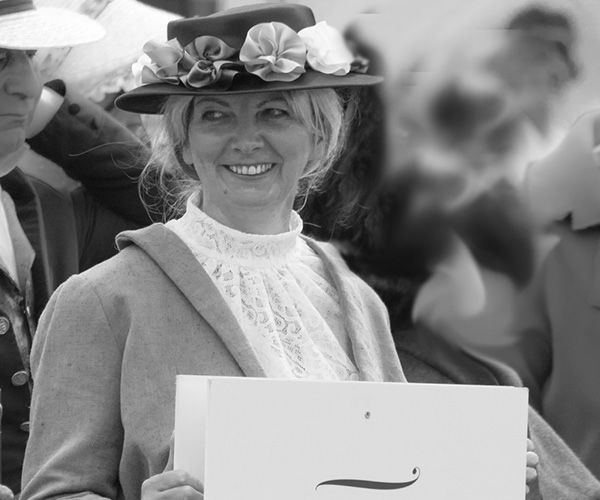By Elaine Rogers
Long before achieving its statehood in 1845, Texas was home to a pioneer population of settlers, rangers, ranchers, renegades and indigenous people, as well as growing numbers of teachers, musicians, politicians and other achievers. Women played their roles and more than a few carved out positions of influence and achievement worthy of the history books.
And despite those popular stereotypes about deferential and darlin’ Texas gals with big hair, sweet manners and stand-by-your-man attitudes, the Lone Star State is too big and diverse for any one category to apply to half the population, either state wide or in the upper east side.
Women’s History Month, celebrated each March in America since 1987, begs for an informal listing to prove it.
Pioneers of Prominence Making History
Mary Louise McKeller Herndon
A wealthy and tenacious woman regarded as the grandmother of women’s suffrage in Tyler, Mary Louise Herndon became a leader of the cause in 1883 when she was 53 — a graduate of Baylor University, the wife of a former Congressman and the mother of eight grown children. Elected to leadership positions with the Texas Equal Suffrage Association (TESA) and an alternate delegate to a National American Woman Suffrage Association (NAWSA) convention, she lobbied to get a bill introduced into the Texas House, an effort that ultimately failed after two years. Herndon continued working as a community organizer and leader of the suffragette movement in East Texas. Her daughter Elizabeth Herndon (Bessie) Potter took an active role as well, serving as a TESA vice president, lobbying for the movement at both the state and national level, and even corresponding with President Woodrow Wilson on the matter. In 1913, Herndon organized the Smith County Equal Suffrage League to initiate another amendment push, and the Texas Legislature voted in 1918 to ratify what would become the 19th Amendment to the Constitution, making Texas the first Southern state to do so. Unfortunately, Herndon died in 1919, having seen women vote in primaries, but not in general elections.
Lallie Prestley Dyer-Briscoe Carlisle
Lallie Carlisle was born in 1866 and quietly made history in Greenville in 1902 when she became the first woman in Texas to hold public office. Her husband, E.W. Briscoe, had died, and she was appointed to serve out his term as county clerk of Hunt County. It was 18 years before women won the right to vote — and 23 years before the Lone Star State elected its first female governor (another wife taking over for her husband) — and the appointment was challenged, then upheld by the state’s attorney general. Later, the mother of five, married again, this time to C.C. Carlisle. She died in 1949 and is buried at East Mount Cemetery in Greenville. During November 2016’s election of firsts, her great-granddaughter Pud Kearns, placed her “I Voted” sticker on Carlisle’s headstone, much like women do in Rochester, New York, at the grave of famous suffragette Susan B. Anthony. Kearns says her tribute caught on, and numerous friends and relatives shared their stickers with her for Carlisle’s gravestone.
Ima Hogg
The daughter of Governor James Stephen Hogg, Ima was born in Mineola in 1882 and educated in both Texas and New York. A music lover from her days as a student, she became a lifelong patron of the arts and a philanthropic leader — active with the Houston Symphony Society and eventually taking the role of the first woman president of the Philosophical Society of Texas. In 1967, she received a state award for her pursuits in historic preservation, an honorary doctorate in fine arts from Southwestern University in 1971 and UT’s Distinguished Alumnus Award — the first woman to do so.
Bessie Coleman
Hailing from Atlanta in 1892, Coleman was the tenth of 13 children of a Cherokee father and an African-American mother. Despite her humble beginnings, she made history after World War I as the first civilian licensed African-American pilot as well as the first black woman aviator and first Native American woman aviator. Historians note that during that time frame, no one would teach a woman or an African- American to fly, so Coleman pursued her dream by studying French and sailing to France to earn her pilot’s license there. By the age of 29, she returned to the states and became a “barnstormer” or exhibition pilot, performing in air shows in Chicago and around the country. Reportedly, she refused to perform unless her audiences were desegregated and everyone used the same gates. She died at 34, doing what she loved, when her plane malfunctioned and she fell from the open cockpit.
Sarah McClendon
Running her one-woman McClendon News Service for decades and infuriating presidents from Franklin D. Roosevelt through the early days of the George W. Bush admnistration, Sarah McClendon was a mainstay of the White House Press Corps — mocked in the ranks of an almost all-male press corps in her early days, but eventually honored as a pioneer. Born in Tyler, she worked in small Texas newspapers and served as a public relations lieutenant in the Women’s Corps in World War II. Moving to the Washington bureau of The Philadelphia Daily News in 1944 before starting her own news service two years later, she was a single working mother at a time when that was rare. Known for her long questions and lecturing-the-president comments, she became the longest-serving White House reporter, and in her later years, despite performing her duties from the constraints of a wheelchair, maintained a style so brash a colleague once described her as “giving rudeness a bad name.” McClendon wrote a memoir in 1996 entitled, Mr. President, Mr President! My 50 Years of Covering the White House, and President Bill Clinton’s press secretary, Michael D. McCurry, once mused that, “Many a president thought he could change the subject by calling on Sarah and lived to regret it.”
Lady Bird Johnson
Born Claudia Alta Taylor in 1912 in East Texas’ Karnack, Lady Bird received her nickname as an infant and it virtually replaced her real name. As Lyndon B. Johnson’s wife who became first lady of the United States from 1963-69, she was a graduate of the University of Texas — studious and notably well educated for a woman of her era. She was also known as a shrewd manager and investor, and after marrying Johnson in 1934, she bankrolled his congressional campaign with her modest inheritance and managed his legislative office during his stint in the navy. She also bought a radio station, followed by a TV station, which generated revenues that made them millionaires. As First Lady, she interacted directly with Congress, something that hadn’t been done before, even employing her own press secretary. Crediting her love of the outdoors with growing up shy and often alone in the piney woods, she was a fan of wildflowers and a lifelong advocate for city and highway beautification projects — promoting The Highway Beautification Act informally known as “Lady Bird’s Bill”. She also pushed her husband to support the Head Start Program to help low-income children in America, and before her death 10 years ago, received America’s two highest civilian honors, the Presidential Medal of Freedom and the Congressional Gold Medal.


